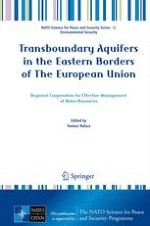This book focuses on sustainable use and protection of transboundary aquifers located along the eastern border of European Union starting from the Baltic Sea and end in the Black Sea. The groundwater resources in this region play a very important role not only as a source of clean and safe drinking water, but also for social, economic and safety reasons. This publication sheds light on a wide range of real problems related to the management of groundwater, problems that are characteristic for most countries situated in the East European region. It also identifies potential threats that may materialise in the absence of cooperation between countries and appropriate measures to jointly manage the shared water resources in the region. Experience from some ongoing projects towards integrated management of transboundary aquifers (research, monitoring and data analysis) is reported. The book is addressed, in particular, to groundwater academics, researchers and experts as well as water management specialists interested in solving environmental issues extended to more than one country territory. On the other hand presented knowledge and experience would be also useful for decision makers especially to support environmental decision processes in border areas and work on preparation of international agreements on groundwater management.
